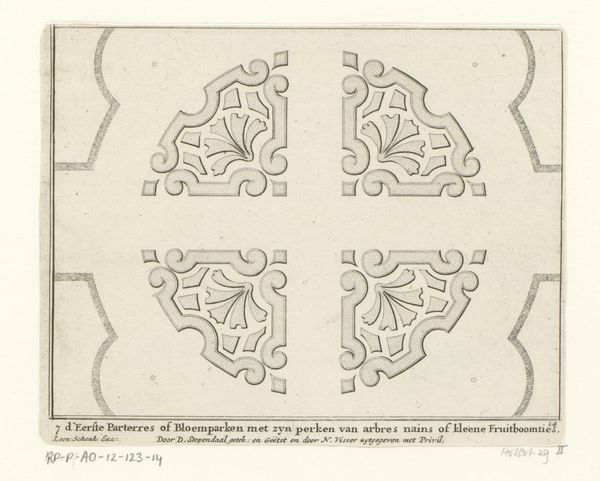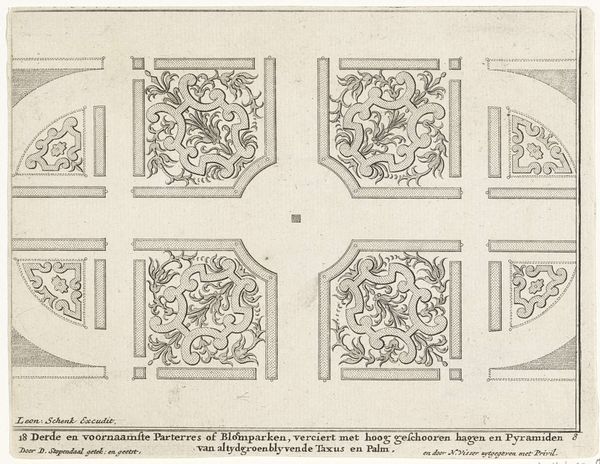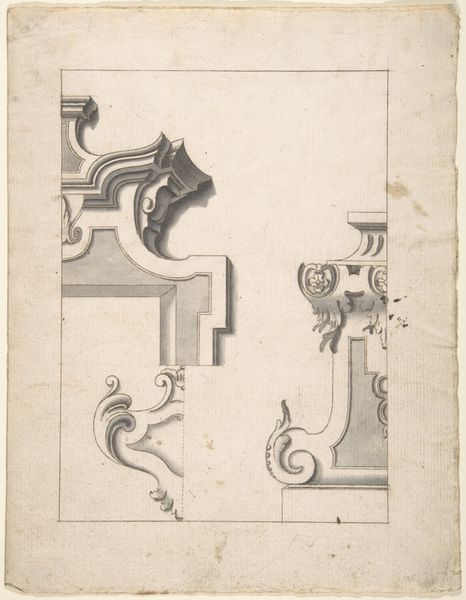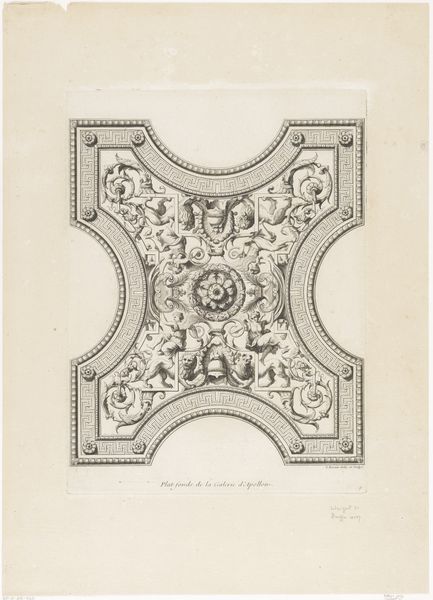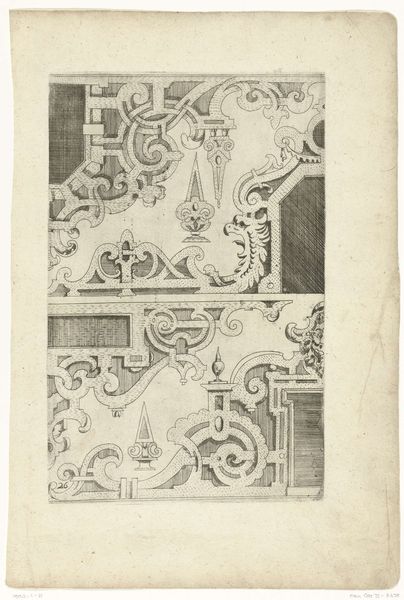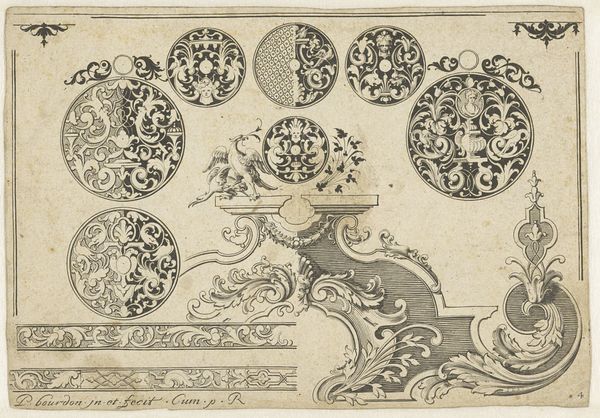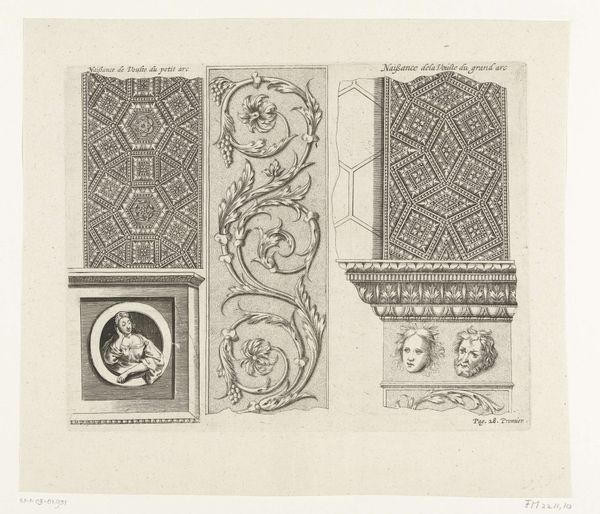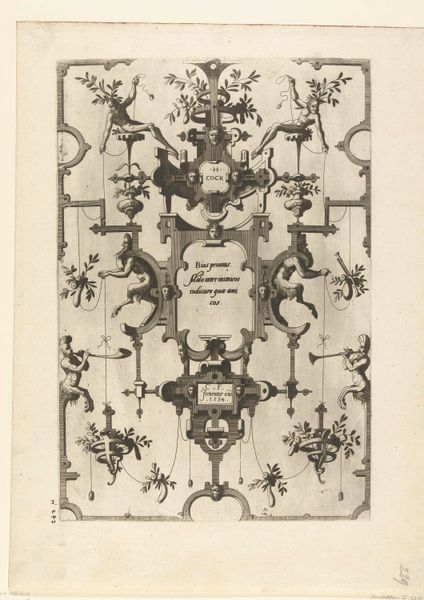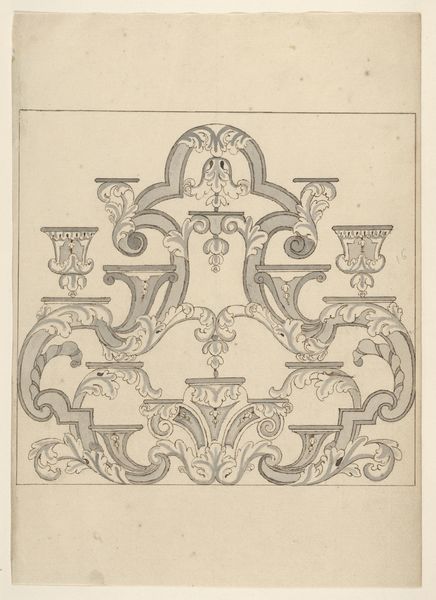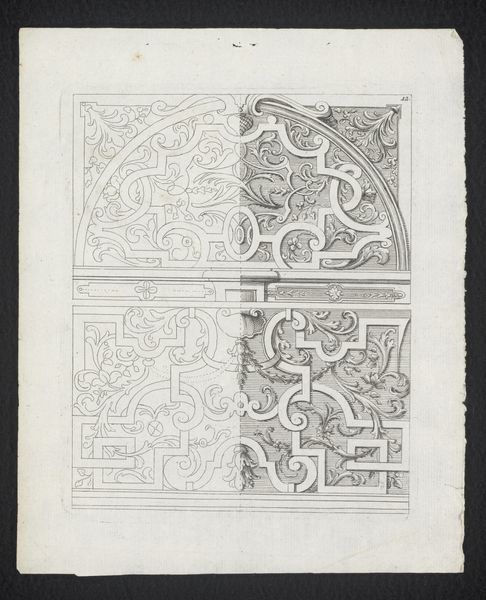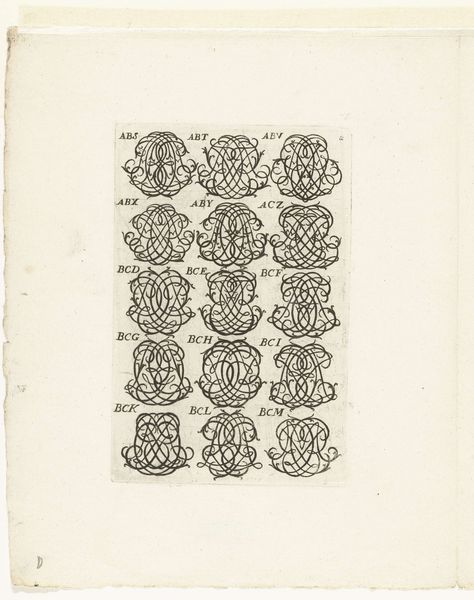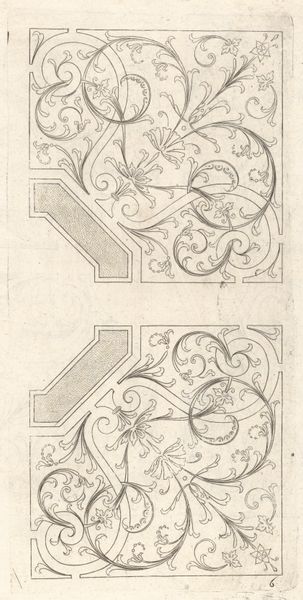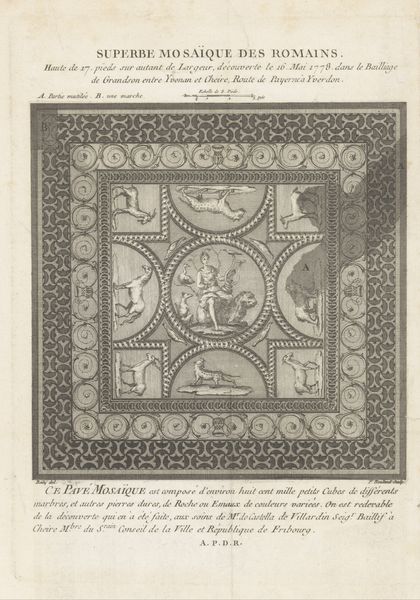
Plattegrond van de bloemperken aan de achterzijde van Huis Clingendael Possibly 1682 - 1746
0:00
0:00
drawing, print, pen, engraving, architecture
#
drawing
#
baroque
# print
#
old engraving style
#
landscape
#
geometric
#
pen work
#
pen
#
engraving
#
architecture
Dimensions: height 128 mm, width 162 mm
Copyright: Rijks Museum: Open Domain
Editor: Here we have "Plattegrond van de bloemperken aan de achterzijde van Huis Clingendael," attributed to Daniël Stopendaal, possibly from 1682-1746. It’s a drawing and print, a detailed plan, almost like a blueprint. I am struck by its geometric qualities. How would you interpret this work? Curator: Indeed, the geometric underpinnings are key to unlocking its formal logic. Note how Stopendaal meticulously organizes the space using a series of repeating shapes: squares, circles, and arabesques. Observe the balance achieved by mirroring the elements, reinforcing a sense of symmetry. Editor: I see that now, with the mirroring. It gives a sense of... control. Is there anything to be read in the negative space itself? Curator: Precisely. Consider how the empty space, the unmarked areas, function as a counterpoint to the defined shapes. Does the relation produce a dialectical interplay between form and formlessness? Editor: Hmm, I hadn’t thought of that. It is fascinating how much the *lack* of content shapes our perception of the depicted garden design. So, without understanding the cultural context, we can see that, based on line, shape and composition? Curator: It emphasizes how intrinsic the composition is and what an analytical formal reading gives us as an audience, indeed! Editor: So much to think about. I’ll never look at garden plans the same way again! Curator: The inherent structure can reveal unforeseen dimensions!
Comments
No comments
Be the first to comment and join the conversation on the ultimate creative platform.
